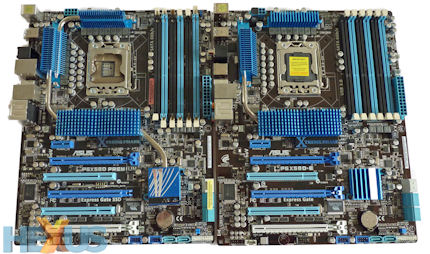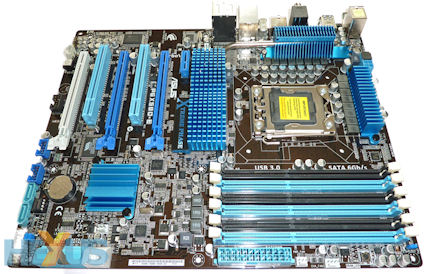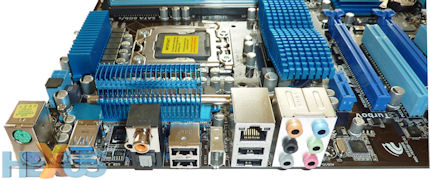Days of the £200-plus X58 board are over
X58 still has legsIntel has a habit of transitioning between processor sockets at an alarming pace. In just over two years the silicon giant will have brought LGA1366 (Bloomfield, Core i7), LGA1156 (Lynnfield, Core i3/i5/i7) and LGA1155 (Sandy Bridge, Core i3/i5/i7) form factors for its mid-to-high-end chips. There are sound technical reasons why Intel moves sockets so frequently, compared to AMD at least, but choosing the correct form factor and motherboard is actually of greater importance than the chip itself.
Take the LGA1366 (X58) platform, which remains Intel's high-end performance desktop of choice. Debuted in November 2008 and therefore almost two years old, one might surmise that it's a complete dead-end, to be discarded in favour of the newer platforms. However, it now supports the very latest six-core, 12-threaded chips and, at worst, will be headlined by the impressive Core i7 980X CPU. Purchasing an X58 board and mid-range Core i7 CPU remains a solid option, especially given the intense competition that's currently raging in the sub-£150 X58 market.
Another sub-£150 X58 board
The time of premium X58 boards costing north of £200 is over. Big-name manufacturers are putting almost their entire focus on delivering value-orientated motherboards. Gigabyte does it well with the X58 USB3 and UD3R, while MSI's X58 Pro is worthy of consideration, priced at £132. ASUS has rolled into this division with the P6X58D-E, retailing at £149, and based on the premium P6X58D Premium.
Perhaps the first question we need to answer is how does ASUS strip almost £100 from the Premium's price yet still keep the P6X58D-E competitive amongst its peers?
The £245 P6X58D Premium on the left and the £150 P6X58D-E on the right. On first glance there's little to separate them. Dig a little deeper and just a few differences are noticeable. The cheaper board's heatsinks aren't quite as impressive, it misses out on a second Gigabit networking port and an onboard reset button. Other than these perfunctory omissions the P6X58D-E carries all the features one would expect in an X58 board - triple-channel memory, support for three-way SLI and four-way CrossFireX, USB 3.0, SATA 6Gbps, 8-channel sound, and a plethora of ASUS-specific goodies.
Taking a particular look at the board, layout is solid throughout. Plenty of room around the socket means easy cooler mounting without ripping your fingers to shreds on the heatsinks. Lots of space between the DIMM slots and first PCIe x16 ensures that you won't have to fiddle with the graphics card(s) when changing the RAM. The power ports and fan headers - four of them - are all near the edge of the P6X58D-E.
Located on the edge of the board by the DIMM slots, users wanting to really stress their components can activate an onboard jumper that gives you access to component-burning voltages. See the following page for more details.
We reckon eight SATA ports - six side-mounted and two on the PCB - are enough for most people. The white-coloured duo, powered by a Marvell 9128 controller, provide SATA 6Gbps compatibility with the very latest in storage, and various levels of RAID are available through the six Intel-provided ports - two of which are next to the USB headers.
The expansion-slot arrangement follows the Premium, that is, three mechanical x16 PCIe 2.0, a x1 PCIe 2.0, and two conventional PCI. The Intel chipset provides all the PCIe lanes on the P6X58D-E and this means the longer slots are electrically bifurcated to either x16/x16/x1 or x16/x8/x8. The blue-coloured ports provide full-bandwidth support in a two-card setup, by the way. ASUS provides audio through the Realtek ALC889 codec. We view this as a positive inclusion because it gives lossless support for high-definition audio sources.
The backplane carries much of what we like to see, including both coaxial and optical S/PDIF-out, FireWire, a handy clear-CMOS button, and six USB ports that are split into a couple of USB 3.0 and a quartet of USB 2.0. We don't think most users will miss the second GigE port, as found on the P6X58D Premium.
First-page verdict
We have little to complain about the cuts that ASUS has made in the transition from the P6X58D Premium to the P6X58D-E. It has most of the features we'd look for in a quality motherboard, sweetened by a sub-£150 retail price. Perhaps only users who need to keep hold of legacy IDE drives will feel excluded.















